Best PHP Array Books to Buy in January 2026
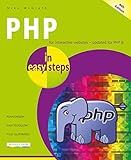
PHP in easy steps: Updated for PHP 8



Learning PHP, MySQL & JavaScript: A Step-by-Step Guide to Creating Dynamic Websites



PHP Arrays: Single, Multi-dimensional, Associative and Object Arrays in PHP 7



PHP Beginner's Practical Guide
- COVERS PHP & MYSQL WITH REAL-WORLD EXAMPLES FOR EFFECTIVE LEARNING.
- MEETS B.E./B.TECH SYLLABUS FOR INDUSTRIAL AND SHORT-TERM TRAINING.
- CLEAR, SIMPLE LANGUAGE ENSURES EASY COMPREHENSION AND RETENTION.


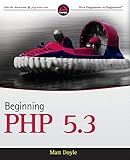
Beginning PHP 5.3 (Wrox Programmer to Programmer)


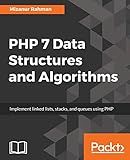
PHP 7 Data Structures and Algorithms: Implement linked lists, stacks, and queues using PHP



PHP for the Web: Visual QuickStart Guide


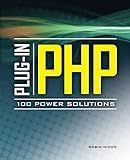
Plug-In PHP: 100 Power Solutions: Simple Solutions to Practical PHP Problems


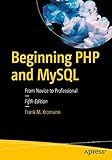
Beginning PHP and MySQL: From Novice to Professional


In PHP, arrays are a fundamental data structure used to store multiple values in a single variable. They can be used to store different types of data, such as numbers, strings, and even other arrays.
To work with arrays in PHP, you first need to understand how to declare and initialize an array. There are several ways to create an array in PHP:
- Using the array() function: $array = array(value1, value2, value3); This method allows you to specify the values directly within the parentheses.
- Using square brackets: $array = [value1, value2, value3]; This is an alternative syntax introduced in PHP 5.4.
- Initializing an empty array: $array = array(); $array = []; You can create an empty array and then add values later.
Once you have an array, you can access its elements using their index. In PHP, array indices are zero-based. For example:
$array = array('apple', 'banana', 'cherry'); echo $array[0]; // Output: apple
Arrays can also be used to store key-value pairs, known as associative arrays. Instead of numeric indices, associative arrays use custom keys to access values. For example:
$person = array('name' => 'John', 'age' => 25, 'country' => 'USA'); echo $person['name']; // Output: John
To add new elements to an array, you can use the array index notation:
$array[] = 'new value'; $array['key'] = 'value';
Arrays can be manipulated in various ways using built-in functions. Some common array functions in PHP include:
- count(): Returns the number of elements in an array.
- array_push(): Adds one or more elements to the end of an array.
- array_pop(): Removes and returns the last element of an array.
- array_merge(): Combines two or more arrays into a single array.
You can also loop through arrays using control structures like foreach and for. The foreach loop is particularly useful for iterating over the elements of an array:
$array = array('apple', 'banana', 'cherry'); foreach ($array as $value) { echo $value; } // Output: applebananacherry
These are just the basics of working with arrays in PHP. Arrays are incredibly versatile and powerful, allowing you to organize and manipulate data efficiently in your PHP applications.
How to check if a specific element exists in an array in PHP?
To check if a specific element exists in an array in PHP, you can use the in_array() function. Here's an example:
$array = array('apple', 'banana', 'orange');
if (in_array('banana', $array)) { echo 'The element "banana" exists in the array.'; } else { echo 'The element "banana" does not exist in the array.'; }
In this example, in_array('banana', $array) checks if the element 'banana' exists in the $array array. If it exists, it returns true, and if it does not exist, it returns false.
How to declare an array in PHP?
In PHP, you can declare an array in two ways:
- Using the array() function: $array = array(); // an empty array $array = array(1, 2, 3); // an array with initial values
- Using the shorter syntax available from PHP 5.4 onwards: $array = []; // an empty array $array = [1, 2, 3]; // an array with initial values
Note that in PHP, arrays are dynamic and can hold values of any data type.
What is the use of the count() function in PHP?
The count() function in PHP is used to count the number of elements in an array or the number of properties in an object. It can also be used to count the characters in a string. This function is particularly useful when dealing with data structures and needing to know the length or size of a data set.
How to add elements to an array in PHP?
In PHP, you can add elements to an array using the array_push() function or by directly assigning values to the array with the [] notation.
Here are two ways to add elements to an array in PHP:
- Using array_push():
$myArray = array(); // Initialize an empty array
// Add elements using array_push() array_push($myArray, "element1", "element2", "element3");
print_r($myArray); // Output the array
- Using [] notation:
$myArray = array(); // Initialize an empty array
// Add elements using [] $myArray[] = "element1"; $myArray[] = "element2"; $myArray[] = "element3";
print_r($myArray); // Output the array
Both methods will produce the same output:
Array ( [0] => element1 [1] => element2 [2] => element3 )
Note: In PHP, arrays can have both numerical and associative keys. The examples above use numerical keys (0, 1, 2, etc.), but you can also use associative keys by specifying them in the [] notation or as the second argument in the array_push() function.
What is the difference between max() and array_max() functions in PHP?
The max() function and the array_max() function in PHP have a few key differences:
- Function type: max() is a built-in PHP function that can accept multiple arguments or an array of values. array_max() is a custom function defined by the user and specifically designed to find the maximum value in an array.
- Usage: max() can accept multiple arguments or an array, whereas array_max() is specifically designed to compute the maximum value from an array.
- Return value: max() returns the highest value among the arguments or the array values. array_max() returns the highest value within the given array.
- Error handling: max() can handle a mix of numeric and non-numeric values. If non-numeric values are present, it will compare their string representations (such as "1" and "10"). array_max() relies on numeric values within the array and may produce unexpected results if non-numeric values are present. It is the user's responsibility to ensure the array contains appropriate data.
In summary, max() is a general-purpose function that can find the maximum value among multiple values or an array, while array_max() is a custom function specifically designed to find the maximum value within an array.
What is the difference between in_array() and array_search() functions in PHP?
The difference between the in_array() and array_search() functions in PHP is as follows:
- in_array(): This function is used to check if a value exists in an array. It returns a Boolean value (true or false) indicating whether the value is present or not. The syntax for using in_array() is as follows: in_array(needle, haystack, strict) needle: The value being searched for. haystack: The array or object being searched. strict (optional): A Boolean flag specifying whether the search should be strict or not. If strict is set to true, the function checks for both the value and type, while if set to false or not provided, it only checks for the value.
- array_search(): This function is used to search for a value in an array and returns the corresponding key if found. If the value is not found, it returns false. The syntax for using array_search() is as follows: array_search(needle, haystack, strict) needle: The value being searched for. haystack: The array being searched. strict (optional): A Boolean flag specifying whether the search should be strict or not, similar to in_array().
To summarize, in_array() is used to check the existence of a value and returns a Boolean, while array_search() is used to find the key of a value and returns the key if found or false otherwise.
